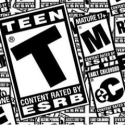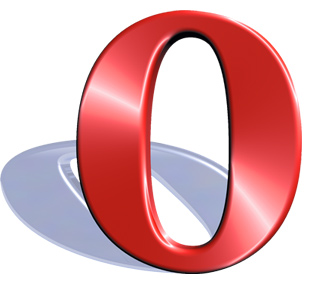QuickJump QuickGuide #9: U & ur iPhone: Breaking into Jailbreak
 How well do you know your iPhone, and what is this “jailbreaking” thing that is in no way to related to breaking out of prison? Is it healthy for your wonder-gadget? Is it recommended? What is in store for the future of iPhone? Ladies and gentlemen, welcome to QuickJump QuickGuide #9: U & ur iPhone: Breaking into Jailbreak.
How well do you know your iPhone, and what is this “jailbreaking” thing that is in no way to related to breaking out of prison? Is it healthy for your wonder-gadget? Is it recommended? What is in store for the future of iPhone? Ladies and gentlemen, welcome to QuickJump QuickGuide #9: U & ur iPhone: Breaking into Jailbreak.
 Who would have thought: a touch-screen mobile phone that has the capabilities of a computer! Am sure some ten years ago, you would have ooh’ed and ahh’ed and then dismissed off the idea as highly impossible.
Who would have thought: a touch-screen mobile phone that has the capabilities of a computer! Am sure some ten years ago, you would have ooh’ed and ahh’ed and then dismissed off the idea as highly impossible.
Then again, the genius that is Steve Jobs is out to prove the world wrong, and we couldn’t be more happier about being wrong. Thanks to him and his fellow Apple-makers, we now have Time Magazine’s 2007 “Invention of the Year”, the iPhone.
But for all the Superman/ Superphone qualities it has to offer, there is apparently much, much more to it than meets the eye.
How well do you know your iPhone, and what is this “jailbreaking” thing that is in no way to related to breaking out of prison? Is it healthy for your wonder-gadget? Is it recommended? What is in store for the future of iPhone?
Ladies and gentlemen, welcome to QuickJump QuickGuide #9: U & ur iPhone: Breaking into Jailbreak.
 On June 29, 2007, Apple launched what is, by far, the most interactive, multi-tasking, oober-cool mobile phone existing in the market: the iPhone. The hype was so huge and the anticipation so strong that even before it actually hit the market, China was already churning out bootleg accessories for the units.
On June 29, 2007, Apple launched what is, by far, the most interactive, multi-tasking, oober-cool mobile phone existing in the market: the iPhone. The hype was so huge and the anticipation so strong that even before it actually hit the market, China was already churning out bootleg accessories for the units.
The road to the launch was no smoothie, either, with lawsuits coming in left and right, for alleged patent infringements, which, looking at the persistence of the iPhone, obviously were found without merit.
A year later, on July 11, 2008, Apple came out with a newer model of iPhones, hotter, more exciting: the iPhone 3G. The main difference between the two models, as you will see from the chart below, is, of course, the addition of 3G for broadband data speeds.
Common Features
- Screen size: 3.5 in (89 mm)
- Screen resolution: 480×320 pixels at 163 ppi, with 3:2 aspect ratio
- Input devices: Multi-touch screen interface plus a “Home” button and “Sleep/Wake” located on the top of the iPhone.
- Built-in rechargeable, non-removable battery
- 2 megapixel camera
- Location finding by detection of cell towers and Wi-Fi networks
- Samsung ARM1176JZ(F)-S v1.0 (620 MHz underclocked to 412 MHz, 32-bit RISC;[5] PowerVR MBX 3D graphics co-processor)[28]
- Memory: 128 MB DRAM[7]
- Storage: 8 GB or 16 GB flash memory
- Operating System: iPhone OS
- Quad band GSM / GPRS / EDGE: GSM 850 / 900 / 1800 / 1900
- Wi-Fi (802.11b/g)
- Bluetooth 2.0 with EDR
- 20Hz to 20kHz frequency response (both internal and headset)
Original vs. 3G iPhone
| Original iPhone |
3G iPhone |
|
| Models |
4GB (discontinued after 2 months), 18GB, 16GB |
8GB or 16GB (Black), 16 GB (White) |
| Size |
4.5 inches × 2.4 inches × 0.46 inch | 4.5 inches × 2.4 inches × 0.46 inch |
| Weight |
135g |
133g |
| Battery |
up to 8 hours of talk 6 hours of Internet use 7 hours of video playback 24 hours of audio playback over 250 hours on standby |
10 hours of 2G talk 5 hours of 3G talk 6 hours of Internet use 7 hours video playback 24 hours audio playback over 300 hours on standby |
| Original iPhone |
3G iPhone |
|
| Headphone Jack |
recessed |
non-recessed |
| Digital SAR |
0.974 W/kg | 1.38 W/kg |
| 3G |
N/A |
Tri band UMTS / HSDPA: UMTS 850 / 1900 / 2100 |
| Assisted GPS |
N/A |
with preference to location based on Wi-Fi or cell towers |
From those specs above, it’s fairly clear to see that this mobile phone packs in a lot of punch, as if it were designed for you not to ask for anything more. But then again, as is the case with consumers, contentment is but a word encrypted into the deep matrices of the subconscious mind. Almost like a sasquatch, actually – people have heard of it, but not actually seen it.
The bird Apple has broken
Like with any God-send gadgets, the iPhone also lured in a good number of hackers to test the mettle of the hardware, to see if they can surpass the security, and in the long run open the gateway to programs and applications that would otherwise have not been made available by Apple, either for free, or at all.
If the handhelds counterpart of the iPhone has that thing called “Custom Firmware”, then the iPhone also has its own version, the “Jailbreak”. So what is this Jailbreak, actually? What does it do, and like with any other major hacks and exploits out there, what are the implications of this not only to the hardware, but to the general consuming public out there?
Jailbreakin’-a-makin’
 According to AppleiPhoneSchool, the technical definition of Jailbreak would be the “hack that allows users to gain access to the entire Unix filesystem. In Unix terms, this refers to changing the root of the directory tree to /.
According to AppleiPhoneSchool, the technical definition of Jailbreak would be the “hack that allows users to gain access to the entire Unix filesystem. In Unix terms, this refers to changing the root of the directory tree to /.
Highfalutin much, eh? Okay, in layman terms, what jailbreaking does is to allow you to customize your iPhone needs, by adding in yourselves your preferred applications. Do take note that Jailbreaking is not exclusive to the iPhone – this may also be done on the iPod Touch.
In order for you to add in those applications, you will need the application that is Cydia or Installer. We’ll discuss Cydia more in-depth on the next installation of the QuickGuide. But for this issue, let’s focus our attention to Jailbreaking.
So now, apart from letting you prettify your applications, Jailbreaking also lets you mod your unit’s icons, wallpaper, dock, status bar, chat bubbles, weather backgrounds, keyboard, etc.
Oh, let’s just be clear on this aspect: JAILBREAKING IS NOT THE SAME AS UNLOCKING. Unlocking is merely the process of making the unit compatible with carriers apart from the official ones (in the case of US, AT&T would be the official carrier).
And more…
Fans of Jailbreaking have justified this act by providing a whole, lengthy lists of reasons why it’s fine. Sitting on top of that list would be being able to gain access to full Internet tethering. For those of you always on the go, and always online, this is definitely heaven-sent.
Some other perks would include your iPhone being used as a modem, access to Google Maps even when offline, creation and addition of ringtones, access to document readers, or go Open Source for media.
That all sounds very inviting, yes? And it is, actually…
BUT.
That’s a big, stressful BUT right there. That’s because Jailbreaking your units is sorely frowned upon by the folks up in the Apple Tree. When word of this jailbreaking practice first broke out just a few months after the Original iPhone was launched, it not only invited curious owners, but IP-manic corporate lawyers.
Are they breaking the law? If yes, which one? What harm does this do to the unit? To the consumer? To the business?
According to Apple, Jailbreaking is bad, and you should get your crummy fingers off that jailbroken cookie jar because, first and foremost, it violates their copyright. Basically, according to them, the mere act of jailbreaking your phone already infringes on their copyrights because, for example, the PWNage Tool allows for a modified bootloader and OS to be installed in the unit. What this results to, therefore, is the infringement on their reproduction and derivative works rights.
If you remember our Legality 101 discussion, derivative works would be those creations that came about from the original form of a creation – “spin offs” in other words.
But to the BUT.
Now, we also discussed Fair Use. And what do you know, it did come up in this instance as well. The EFF, back in February, pushed for a motion to grant a DMCA (Digital Millenium Copyright Act) exemption for iPhone owners who have chosen to jailbreak their units.
Their argument is that “the culture of tinkering is an important part of our innovation economy.” We’ve heard this one before, too. I just can’t seem to put my finger on where I’ve heard this before…

Where have I heard that line before???
However, Apple does not bite to this reasoning, and maintains that the “tinkering” is not an act committed by the owners themselves, but rather, is done by other parties and made available as a downloadable software.
Bannination
Just last week, on April 1, 2009 (no, this is no April Fool’s joke), Apple has announced that their new iPhone Developer Program Licence Agreement now stipulates that jailbreaking, assisting in jailbreaking, and developing and distributing jailbreak apps will NOT be condoned.
Neither can developers use the iPhone OS, SKD, and other developer tools to develop applications for distribution if it’s not for distribution on the App Store, or Ad Hoc. Implication: Cydia is also a bad idea now.
Don’t believe us? Here Apple talk:
(e)You will not, through use of the Apple Software, services or otherwise, create any Application or other program that would disable, hack or otherwise interfere with the Security Solution, or any security, digital signing, digital rights management, verification or authentication mechanisms implemented in or by the iPhone operating system software, iPod touch operating system software, this Apple Software, any services or other Apple software or technology, or enable others to do so; and
(f) Applications developed using the Apple Software may only be distributed if selected by Apple (in its sole discretion) for distribution via the App Store or for limited distribution on Registered Devices (ad hoc distribution) as contemplated in this Agreement.
Of course, this new development is sure to have further ripple effects to all those concerned (the QJ team, for one, is now confronted with the question of whether or not we should push through with the publishing of the Cydia Features Week next week).
But more importantly, we might see a slight discouragement among indie developers alike. This does not, however, imply in any way that we won’t be seeing the hard-at-work iPhone Dev Team release their jailbreak for iPhone OS 3.0.
And although we do not want to compare, we cannot help but notice that the iPhone is indeed going the way of the PSP, not only in terms of the gaming market, but also with the way the independent development scene is shaping up.
We should probably ask the consumers if they’re ready for these things, but that would be barking at the wrong tree. Rather, it’s Apple that we should ask: are you ready for the direction your fruit is branching out to?
It never falls far from the tree
 The decision to jailbreak your iPhone can only be determined by you (although Apple’s stand on jailbreaking, stern as it is, should probably help you immediately lean towards a particular side, especially if you’re the law-conscious type).
The decision to jailbreak your iPhone can only be determined by you (although Apple’s stand on jailbreaking, stern as it is, should probably help you immediately lean towards a particular side, especially if you’re the law-conscious type).
We are not going to tell you if you should or should not. Again, this QuickGuide was designed to provide you with basic information that would have otherwise been ignored, especially at a time when information can easily be acquired – and shrugged and disposed off.
So, go off enjoy your iPhones, there’ll be more coming from us for this wonder-gadget in the coming weeks. Hope you enjoy the variety!



